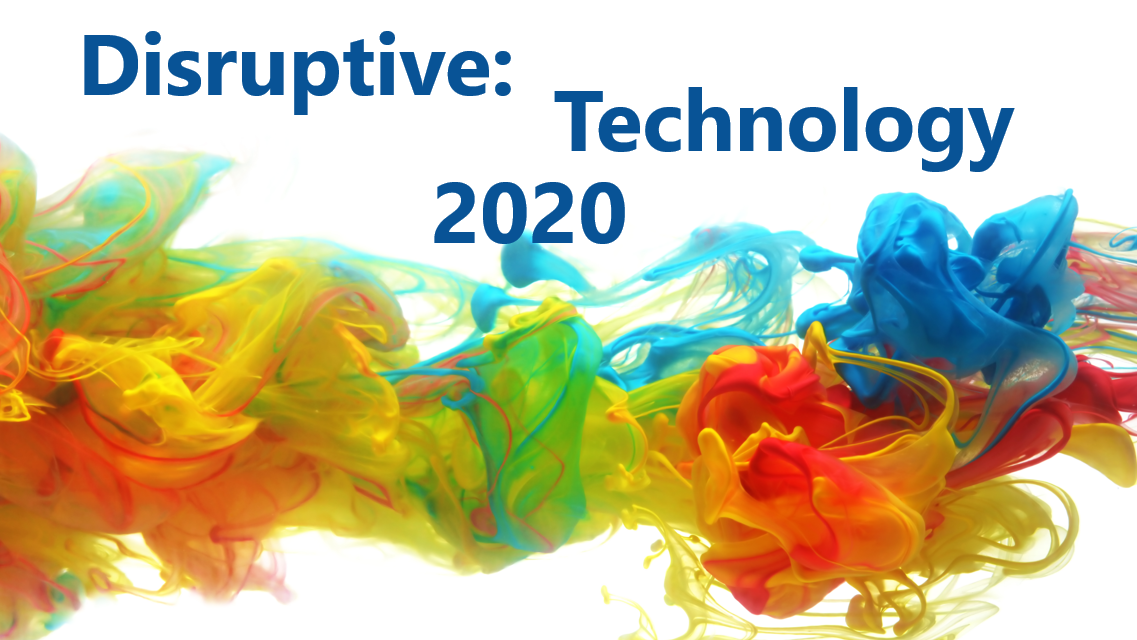Disruptive Technologies: Five areas to keep a watchful eye on technology trends for the 2020′s
Transitions, disruptions, and transformations … and the steps you can take in 2020 to harness their potential
‘“Scanning the vendor blogs on tends for the twenty twenties I came across this interesting perspective of disruptive Tech for 2020 written by Ettienne Reinecke, Group CTO at NTT Ltd, an old friend from the past”, comments Craig Ashmole, Founding Partner at London based IT consulting firm CCServe Ltd.
So this is a ‘snap shot’ of his findings.
Ettienne goes on to state, “Technology is changing at the speed of light. Today’s trend is tomorrow’s mainstream adoption, and organizations need to consider how this is affecting them, and what they should prioritize. In this blog, I’ll share some of my thoughts on the topic.”
Trend 1: Data becomes the centre of the IT universe
Operational and digital transformation is all in the data: how you collect it, what you do with it, the platforms you have to manage it, and how you make it available. The ability to decouple data from applications allows organizations to really embrace operational and digital transformation.
Volumes of data collected at the most granular level from IoT devices, digital platforms – effectively any technology system – can now be made available through application programming interfaces for analysis, business insights, and developing additional applications.
We aren’t just collecting more data, we are also collecting more granular data, allowing us to gain more insights than were ever possible; the higher the fidelity, the better the insights. Data truly is the centre of it all, and it’s therefore critical to get your data platform right, including defining your data strategy, data platform architecture and data service catalogue. The data platform is not only essential to ensure data can be stored and processed, but it will also be the enabler for the adoption of new technologies, such as serverless computing.
Trend 2: Massive changes on the edge will transform the technology landscape
Thanks to container-based architecture, we can run scaled-down stacks, process data, and make decisions at the edge, without even touching backhaul to the cloud or a data centre. Edge processing will have a pervasive impact on the wider industry, enabling technology solutions to be applied in ways and places not previously possible.
5G is a major talking point in the industry, but it’s important to distinguish where the promise of pervasive broadband really lies – and that’s in the higher frequency (hence, higher bandwidth) range of 24 to 28 GHz. RF technology in these bands is challenged by short wavelength radio waves that are highly susceptible to interference and have low fixed-substrate penetration ability. WiFi6, on the other hand, operates in the 2.4 Ghz range, and has seen significant improvements from WiFi5, with 40% more bandwidth and 400% improvement in efficiency in dense user areas. This will likely have a greater impact on the edge for now.
These changes on the edge will have a profound impact on how we design and run everything, from networks and data centres to applications and security, and how organizations get value out of new data they’re able to collect and process as a result.
Trend 3: Applied technology explodes to bridge the digital and physical
Applied technology won’t only help us bridge the gap between our physical and digital worlds, it’ll allow us to blend them seamlessly.
Spatial computing will introduce us to a whole realm of realities – virtual, augmented, enhanced, hyper, mixed, authentic – and digital interfaces will expand to include multiple senses: sight, sound, touch and smell. Immersive environments, where the physical and digital blend, will have a pervasive impact on the industry.
The scale and scope of what’s possible are in their infancy. The application of technology is finding its way into areas previously unthinkable – and at an unforeseen speed. These technologies continue to evolve, and developments such as holographic telecasting continue to blur the lines between the physical and digital worlds.
Trend 4: Computing model evolution and hybrid compute raise big questions
The computing model evolution and adoption of hybrid compute are having a profound impact on organizations, vendors, and start-ups. It’s time to take a reality check on what this means for applications, workloads, and the broader business.
Hybrid computing is increasingly a blend of physical servers, virtual servers, container and serverless computing and XaaS offerings. Application lifecycles will determine the optimal computing architecture, and these realities are becoming clearer. Container and serverless computing models require a rewrite of application code, a cost reality that could result in retaining physical and virtual server architectures, or taking the leap to SaaS models. No doubt that enterprises will have to leverage all these models in a true hybrid form for quite some time.
Serverless computing is growing in adoption, and offers even greater agility and cost savings because applications don’t have to be deployed on a server at all. Instead, functions run from a cloud provider’s platform, return outputs, and immediately release the associated resources. It is critical to note that the adoption of serverless computing will require a well-defined data platform.
Trend 5: Programmability and predictive capabilities reshape cybersecurity
As every element of infrastructure and architecture becomes programmable, we can start thinking about security posture as code.
If we can put a firewall inside the software of all containers and virtual machines in our architecture, and contain the flow of data between them, security vulnerabilities are greatly reduced: there are simply no doors in the wall you can pick the lock for.
If you can maintain the dataflow in software, it’s never on a network where it can be hacked, siphoned off, or stolen. Some vulnerabilities will still be there but the granularity, contained dataflows, and software greatly reduce and improve the vulnerability profile. Programmability opens the doorway to leveraging the brute force of automation, in order to apply measures at a much more granular level and scale not possible before; certainly, an improvement in some cases, with possible added complexity in other cases.
Read the full article on disruptive technologies here
Author: Ettienne Reinecke
Group Chief Technology Officer at NTT Ltd

Recent Comments